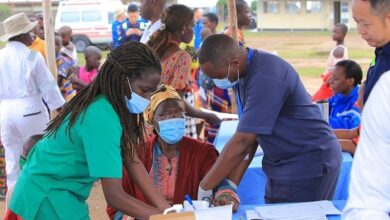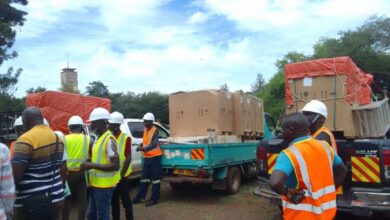Uganda grapples with triple burden of malnutrition
In Uganda, these issues are particularly pronounced due to factors like food insecurity, poverty, and limited access to healthcare.

Hoima: Uganda still continues to grapple with a triple burden of malnutrition; thus, 26% of the children in Uganda are unable to reach their full potential due to stunting.
This was disclosed during a district nutrition stakeholders’ engagement for Kikuube district held at the Hoima Buffalo Hotel recently, under a project Right to Grow being implemented by Action Against Hunger funded by the government of the Netherlands.
Peter Eceru, program manager for Action Against Hunger, revealed that the project is aimed at strengthening local government, communities, CSOs, and CBO structures for increased investment.
Eceru says they support communities with livelihoods, food safety and security, nutrition, and WASH and are now doing advocacy.
He revealed that Uganda continues to grapple with a triple burden of malnutrition, with 26% of children in Uganda unable to reach their full potential due to stunting.
Eceru says over 30% of women of reproductive age are anemic, and 26% are overweight or obese in this country.
Dr. Gerald Asaba, the acting district health officer in Kikuube district, stressed that Kikuube district has a lot of cases of malnutrition, which is affecting children below 5 years and pregnant mothers.
Dr. Asaba says the population these days is increasingly growing cash crops than food crops, and men in Kikuube district are hiring out land for sugarcane growing.
He says there is a need to teach communities on specific crops to grow to curb malnutrition.
Peter Banura, the LCV Kikuube district reveals that there are five sugar mills in the region and all are competing for land to grow sugarcane.
Banura says most people have resorted to growing or hiring their land for sugarcane growing and no longer bother to grow food crops.
‘’There is a shift towards growing cash crops like sugarcane instead of food crops, impacting food availability and nutrition,’’ he said, adding that poverty, lack of education on nutrition, and inadequate healthcare services contribute to the malnutrition problem.
Kikuube district is particularly affected, with high rates of malnutrition among children under five and pregnant women. Efforts are being made to educate communities on growing specific crops to improve nutrition.
The triple burden of malnutrition refers to the coexistence of three forms of malnutrition within a population:
Undernutrition: This includes conditions like stunting (low height for age), wasting (low weight for height), and underweight (low weight for age). It primarily affects children and can lead to long-term developmental issues.
Micronutrient Deficiencies: Often referred to as “hidden hunger,” this involves a lack of essential vitamins and minerals such as iron, iodine, vitamin A, and zinc. These deficiencies can cause serious health problems, including anemia, impaired cognitive development, and increased susceptibility to infections.
Overweight and Obesity: This is increasingly common due to changes in diet and lifestyle. It leads to a higher risk of non-communicable diseases (NCDs) such as diabetes, heart disease, and certain cancers.
In Uganda, these issues are particularly pronounced due to factors like food insecurity, poverty, and limited access to healthcare. Addressing this triple burden requires a multifaceted approach, including improving food security, enhancing nutrition education, and strengthening healthcare systems.
Do you have an advertisement or article you want to publish? Mail us at theugreports@gmail.com or WhatsApp +256394700683.






